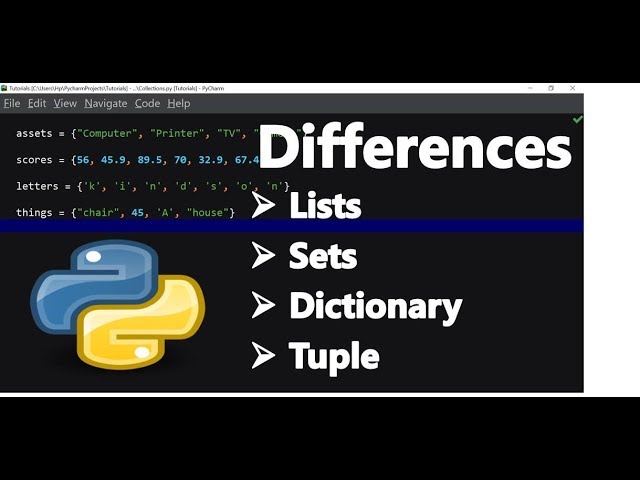Tuple, Set, and Dictionary
نشر بتاريخ 2024-07-16 21:35:59
0
9كيلو بايت

These are all fundamental data structures used to organize information in programming. Here's a breakdown of each:
Tuple:
- Ordered collection of elements, similar to a list.
- Elements can be of different data types (strings, numbers, etc.).
- Immutable: Once created, you cannot change the elements within the tuple.
- Used for representing fixed data like coordinates (x, y) or product details (name, price, stock).
Set:
- Unordered collection of unique elements.
- Elements can be various data types.
- Useful for storing unique items and performing set operations like checking membership or finding differences between sets.
Dictionary:
- Unordered collection of key-value pairs.
- Keys must be unique and immutable (often strings or numbers).
- Values can be any data type.
- Used for storing data where you need to access it by a specific key, like phone numbers in a phonebook (key: name, value: phone number).
Here's a table summarizing the key differences:
| Feature | Tuple | Set | Dictionary |
|---|---|---|---|
| Order | Ordered | Unordered | Unordered |
| Mutability | Immutable | Mutable | Mutable |
| Duplicate Data | Allowed | Not Allowed | Not Allowed (for Keys) |
| Access Method | By index | By membership | By key |
البحث
الأقسام
- Technology
- التعليم
- Business
- Music
- Got talent
- Film
- Politics
- Food
- الألعاب
- Gardening
- Health
- الرئيسية
- Literature
- Networking
- أخرى
- Party
- Religion
- Shopping
- Sports
- Theater
- Wellness
إقرأ المزيد
MATIGO PHYSICS PAPER 1 2024
MATIGO UACE PHYSICS PAPER 1 2024
Dynamic Typing, Stubs, and Namespaces
Dynamic Typing:
In Python, variables don't have a pre-defined data type associated with...
Basic structure of an HTML document
An HTML document is composed of two main sections: the head and the body.
The <head>...
Management Information Systems (MIS)
Management Information Systems (MIS) are integrated systems designed to support management and...
SOLUTIONS TO ECONOMICS SEMINAR QUESTIONS
SOLUTIONS TO ECONOMICS SEMINAR QUESTIONS



